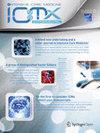Validation of a low-cost continuous renal replacement therapy dialysate fluid controller for experimental purposes
IF 2.8
Q2 CRITICAL CARE MEDICINE
引用次数: 0
Abstract
Continuous renal replacement therapy (CRRT) support is crucial for critically ill patients and it is underexplored in specific situations. Experimental CRRT offers a means to gain insights into these scenarios, but the prohibitive cost of CRRT machines limits their accessibility. This study aimed to develop and validate a low-cost and precise dialysate controller for experimental CRRT. Our results demonstrate a commendable level of precision in affluent flow control, with a robust correlation (R2 = 0.99) for continuous flow and a strong correlation (R2 = 0.95) for intermittent flow. Additionally, we observed acceptable agreement with a bias = 3.4 mL (upper limit 95% = 43.9 mL and lower limit 95% = − 37 mL) for continuous flow and bias = − 20.9 mL (upper limit 95% = 54 mL and lower limit 95% = − 95.7 mL) for intermittent flow, in this way, offering a precise CRRT dose for the subjects. Furthermore, we achieved excellent precision in the cumulative ultrafiltration net (UFnet), with a bias = − 2.8 mL (upper limit 95% = 6.5 mL and lower limit 95% = − 12 mL). These results remained consistent even at low affluent flow rates of 8, 12, and 20 mL/min, which are compatible with CRRT doses of 25–30 mL/kg for medium-sized animals. Moreover, the acceptable precision of our findings persisted when the dialysate controller was subjected to high filter dialysate chamber pressure for an extended duration, up to 797 min. The low-cost dialysate controller developed and tested in this study offers a precise means of regulating CRRT in experimental settings. Its affordability and accuracy render it a valuable instrument for studying CRRT support in unconventional clinical scenarios, particularly in middle-income countries’ experimental ICU laboratories.验证用于实验目的的低成本连续性肾脏替代疗法透析液控制器
持续肾脏替代疗法(CRRT)对危重病人至关重要,但在一些特殊情况下,这种疗法还未得到充分探索。实验性 CRRT 为深入了解这些情况提供了一种途径,但 CRRT 机器的高昂成本限制了其使用。本研究旨在开发和验证用于实验性 CRRT 的低成本、精确的透析液控制器。我们的研究结果表明,流入流量控制的精确度值得称赞,连续流的相关性很强(R2 = 0.99),间歇流的相关性也很强(R2 = 0.95)。此外,我们还观察到了可接受的一致性,持续流的偏差 = 3.4 mL(上限 95% = 43.9 mL,下限 95% = - 37 mL),间歇流的偏差 = - 20.9 mL(上限 95% = 54 mL,下限 95% = - 95.7 mL),从而为受试者提供了精确的 CRRT 剂量。此外,我们的累积超滤净值(UFnet)也达到了极高的精度,偏差 = - 2.8 mL(上限 95% = 6.5 mL,下限 95% = - 12 mL)。这些结果即使在 8、12 和 20 毫升/分钟的低流入流速下也保持一致,这与中型动物 25-30 毫升/千克的 CRRT 剂量相符。此外,当透析液控制器长时间承受高过滤透析液室压力(长达 797 分钟)时,我们的研究结果仍能保持可接受的精确度。本研究中开发和测试的低成本透析液控制器提供了一种在实验环境中调节 CRRT 的精确方法。它的经济性和精确性使其成为研究非常规临床情况下 CRRT 支持的重要工具,特别是在中等收入国家的 ICU 实验室。
本文章由计算机程序翻译,如有差异,请以英文原文为准。
求助全文
约1分钟内获得全文
求助全文
来源期刊

Intensive Care Medicine Experimental
CRITICAL CARE MEDICINE-
CiteScore
5.10
自引率
2.90%
发文量
48
审稿时长
13 weeks
 求助内容:
求助内容: 应助结果提醒方式:
应助结果提醒方式:


